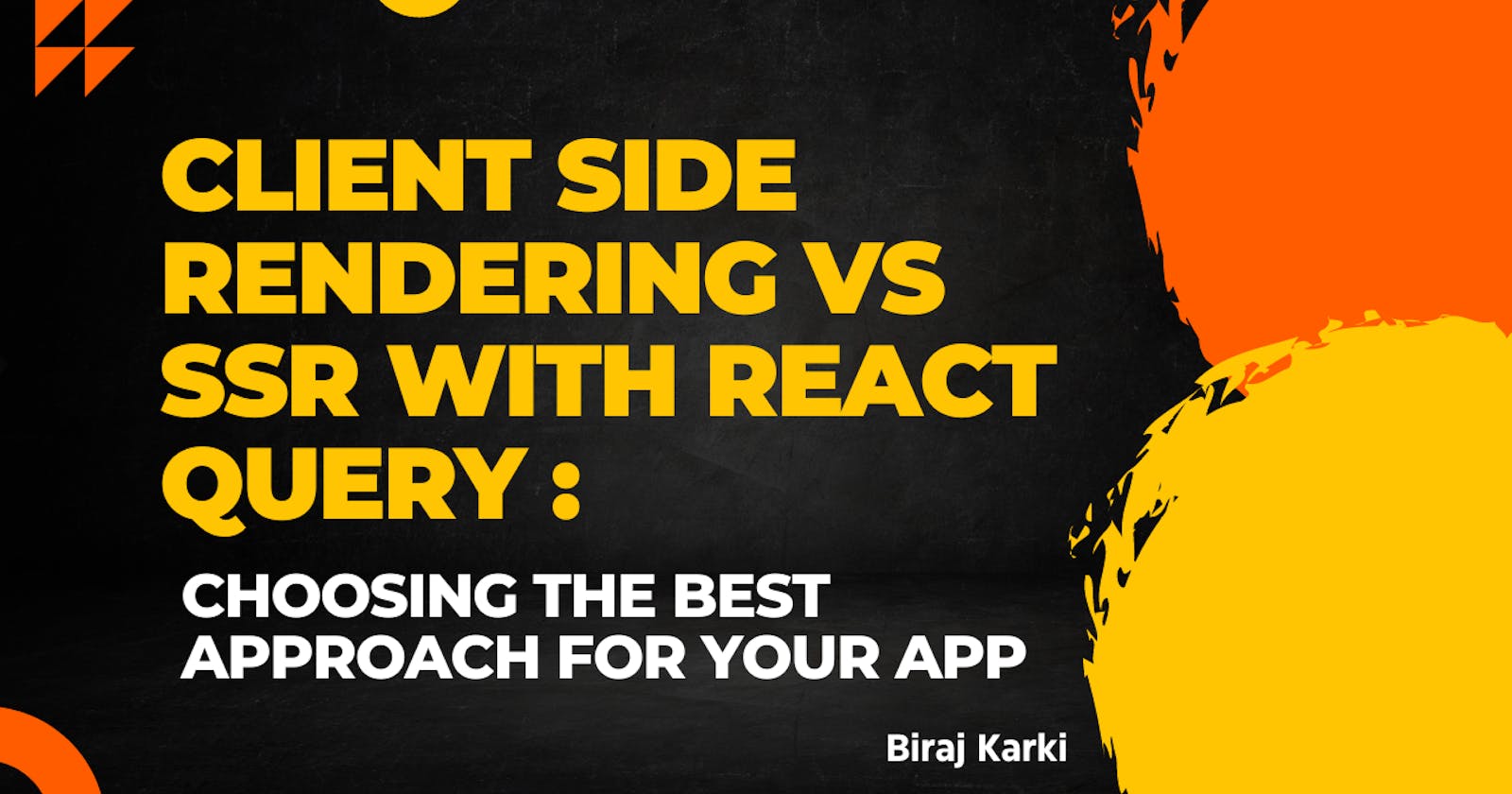Client Side Rendering vs SSR with React Query: Choosing the Best Approach for Your App
One of the most important decisions developers have to make when making web apps is whether to use Client Side Rendering (CSR) or Server Side Rendering (SSR) (SSR). Both methods have their pros and cons, but SSR is becoming more popular because it can improve website performance, SEO, and user experience. This article talks about the differences between CSR and SSR and how to use React Query with SSR in a React application.
Client Side Rendering (CSR)
Client-Side Rendering is a way of loading a website's HTML and JavaScript files into the browser and displaying the website on the client's computer. Using CSR, a client's browser asks the server for a website's HTML and JavaScript files. The server sends back an HTML file with a link to the JavaScript file that will display the page. The page is shown on the client side after the JavaScript file asks the server for the information it needs. CSR makes the user interface more responsive, which is one of its best features.
This is because the user's device is where client-side rendering happens. This means that only the needed data is brought in, so rendering happens faster. CSR also adds more life to the user experience by making it easier to add animations and transitions.
CSR has some problems. First, it can make pages take longer to load, especially for people with slower internet connections, which can make the user experience worse. Second, it might be hard for search engine crawlers to index the site's content, which would hurt its search engine optimization (SEO) performance.
Server Side Rendering (SSR)
Server Side Rendering is a method that loads a website's HTML and JavaScript files on the server before sending a fully rendered page to the client's browser. With SSR, the server sends the fully rendered page and all the data the browser needs to show the page to the client. This means that the page can be displayed by the client's browser without sending any more requests to the server. SSR makes pages load faster, especially for people with slow or unstable internet connections. There is no delay in rendering the page because it is sent right away to the browser on the client's computer. SSR can also help SEO because it makes it easier for search engine crawlers to index the website's information.
Still, SSR isn't perfect.
First, it might be harder to put into action than CSR. Second, it might not work as well as CSR, especially if the server is full. It might be harder to add animations and transitions that change over time to an SSR application.
React Query with SSR
React Query is a powerful library that lets React apps manage remote data. It makes it easier to get, save, and change data from an API, and it can speed up a website by reducing the number of server calls. React Query is also good for SSR apps, so developers who use SSR in their React apps should think about using it. To link React Query to SSR, we must use the useQuery hook. This hook lets us get data from an API and save it in a cache. This makes sure that the information is always available, even if the user leaves the page and comes back later. For SSR to work with useQuery, we have to wrap our application in a DataProvider component that takes care of the cache.
Conclusion
In conclusion, both CSR and SSR have their pros and cons, and the choice of which one to use depends on the needs of the application. Yet, it is clear that SSR is becoming a more popular choice for developers who want to improve a website's speed and SEO. Also, it's important for developers to keep up with the latest changes in web development and to regularly check how well their apps work and how their users like them. Then, they can make an informed decision about whether to use CSR, SSR, or both in their applications.
The end goal should be to make the user's experience quick and interesting while still meeting the needs of the app.
